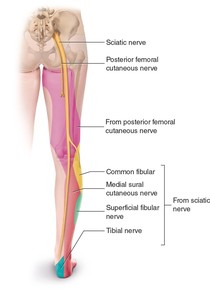Your X-Ray Doesn’t Tell the Whole Story
Have you received scary news from your physician about your x-ray, ultrasound, or MRI results? Were you told that you have an issue that requires surgery? Then read on to find out more about how, with our understanding of the body, we can help.
When someone presents for their first physiotherapy session at Body Science Therapy in Mississauga, they may be surprised when we don’t look at their x-ray, MRI, ultrasound right away.
This is because we understand that the body is an integrated structure composed of many segments that influence each other. With this understanding, a diagnosis of “degenerative disc disease” or “rotator cuff tear” or “tendonitis” becomes less crucial.
The imaging showing degradation and degeneration and a meniscus tear, doesn’t tell you that the old injury to your knee or ankle on the other leg forced compensations that gradually over time caused you to load the leg with the “torn meniscus” more and more. And the reason running “caused” your meniscus to tear is from this (mal)adaption, this compensation.
What else?
It also doesn’t tell you that while yes, this is a tear in your meniscus, it does not in fact have the capacity to send pain signals to your brain. Imagine that! We are assessing, treating, targeting, and blaming a structure for your pain – when it quite literally does (mostly) not have the capacity to be at fault!
Seems a bit silly doesn’t it?
This can also explain why sometimes surgery isn’t effective – because it was performed on a structure that was not responsible for the issue in the first place.
So why DO I have knee pain then?
It is common that the meniscus degeneration or minor tears are a coincidental finding.
The MRI, X-ray, ultrasound, CT scan, doesn’t explain the functional diagnosis, which is what we do at Body Science. Imaging doesn’t show that the source of the pain in your knee is oftentimes from the saphenous nerve OR even the sciatic nerve.


The saphenous nerve is irritated because of an overloaded and inflamed hip, which leads to compression and irritation of the nerve bundle that the saphenous nerve stems from.
And since the other leg has likely had issues for some time now, causing the compensations on the other hip and leading to knee pain, the lower back has developed some problems of its own and has impaired ability to send, receive, and interpret nerve signals, which contributes to both increased pain and tension in the knee and back, as well as strength and endurance impairments in the muscle that act on the knee.
In the end, don’t be surprised when we don’t (initially) read your imaging results for something like knee pain. And do not wait to see a specialist before coming in to get a functional, whole-body diagnosis. Because by the time the 3+ months is up and you finally get to see the specialist or go for surgery, we may have already resolved your problem, and more!
